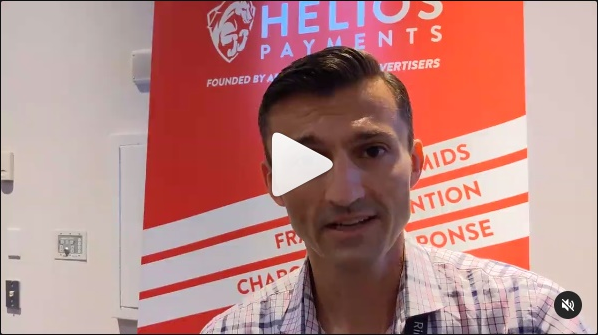It’s not uncommon for new start-ups and established merchants alike to require loans, insurance and investments. Traditionally, this financial risk has been handled by institutions that have the ability to do underwriting, a term that was developed from the act of each risk taker writing their names on a piece of paper, under the amount they are willing to risk for the fee that they charge.
In recent years, as merchants continued to need outside help in regards to risk, and the adoption of computers and digital technology, it should come as no surprise that there has been a growing shift towards automating this process.
Computer generated loan decisions are continuing to grow, and there doesn’t seem to be much stopping this trend.
So with that in mind, this is where Automated Underwriting steps in, and although it can have the benefits of faster processing times and less human error, it can come at a cost for merchants.
In this article, we will go over the benefits of automated underwriting and it’s downsides for merchants, and why using a manually reviewed underwriter is probably your best option if you are a High-risk merchant.
Benefits or Automated Underwriting
Considering that the process of automated underwriting has on a continual basis been adopted by the financial industry, it’s clear that there is some use to this technology, or at least many within it think it does.
Typically underwriting is riddled with inefficiencies, and these include managing submissions, documents and data efficiently, harnessing data to avoid risk, and setting up price packages and rates quick enough with rating and quoting solutions. Not to mention, there are issues with shifting customer needs and expectations during the pandemic, and managing and implementing findings from the growing access to customer data.
Since the beginning automation was inevitable, and this is mainly because Automated Underwriting has many benefits and allows institutions to:
- Have a faster turnaround time
- Use resources more efficiently and have a better workflow
- Monitor customer information and create data
- Apply more consistency to their decision making process
- Reduce human error because of AI and algorithms
- Reduce paper waste
Also, because Automated Underwriting makes the process very efficient, it allows you to better assess whether the merchant has the 3 C’s: Credit, Capacity and Capital.
Typically, it can be very time intensive to assess these factors, and this is why the industry has been shifting away from Manual underwriting more and more.
And with these increased efficiencies, some merchants may get some benefits.
At least initially…
Downsides for High-risk Merchants
So we’ve established the benefits of automated underwriting, and the inefficiencies in regards to doing it manually. It’s clear that the industry has tapped into a method that could improve their business operations and reduce risk, and that’s great for Merchants, right?
Not necessarily, and when it comes to High-risk merchants, this couldn’t be further from the truth.
Merchants in general need to be careful when choosing an underwriter, and this is especially true depending on your industry, and whether or not it’s considered a risk. It’s not uncommon for Merchants to choose popular payment processors because of brand awareness and their ease of use, but this can be a trap.
Oftentimes, popular payment processors like PayPal, Braintree (owned by PayPal) and Stripe use automated underwriting frequently to get users in the door and start collecting revenue from accounts.
This isn’t really in the best interest of High-risk merchants, because once these payment processors notice high-chargebacks, and see that you are in a High-risk industry after human-verification, that’s when they’ll likely jump ship.
You’ll get dropped when they realize you are a High-risk merchant, and to make matters worse, they will often hold funds for up to 6 months, even if you have low chargebacks!
It’s also important to consider that the key technology behind Automated Underwriting, RPA (Robotic Process Automation), is often very rigid and inflexible. Institutions know that if-then statements can be broken, and this could lead to your acceptance as a merchant, even though you are the right fit for their amount of risk tolerance.
This is a big waste of time! You need to find a better way…
Why you need Human Underwriting
As much as you notice the potential inefficiencies of manual underwriting, and realize the advances that have been made, you’re probably still at a roadblock.
By this point you already recognize the potential benefits of automated underwriting, but you also understand that there are massive downsides for High-risk merchants. With this in mind, you should forget about automated underwriting moving forward, because there’s a better and more truly efficient way to ensure the underwriting process goes smoothly with your bank.
This is where we step in. Luckily, Helios Payments has developed solutions with the needs of High-risk merchants in mind, and we can help you find optimal solutions to tough problems.
Whether you’re in:
- Nutraceuticals
- Trial and Recurring Payments
- CBD products
- Multi-Level Marketing (MLM)
- Diet Programs
- High Volume and/or High Ticket Operations;
- Tech Support
- Software & E-books
- Electronic Cigarettes
We’ve got you covered.
We’ll streamline the human underwriting process for you, and you can rest easy knowing that we only work with risk-tolerant banks. This starts with our 5 Minute Application and continues with the Helios Path, which is our proven process.
So by working with us, not only will you have a partner that truly understands the challenges of the underwriting process, but you’ll also tap into our experience and the banking relationships we have within the High-risk space. And from there, we can get you the most optimal solutions you need to ensure proper and effective underwriting.
Computers, automation, and now AI have all been game-changers in the payments industry, but it has come at a cost. You may get quicker approvals initially, but this will likely backfire on you.
When they realize that you do not fit their appetite for risk, you’ll see things change in an instant.
And when they pause your business operations, and hold your hard earned money, they won’t lose sleep over it either!






